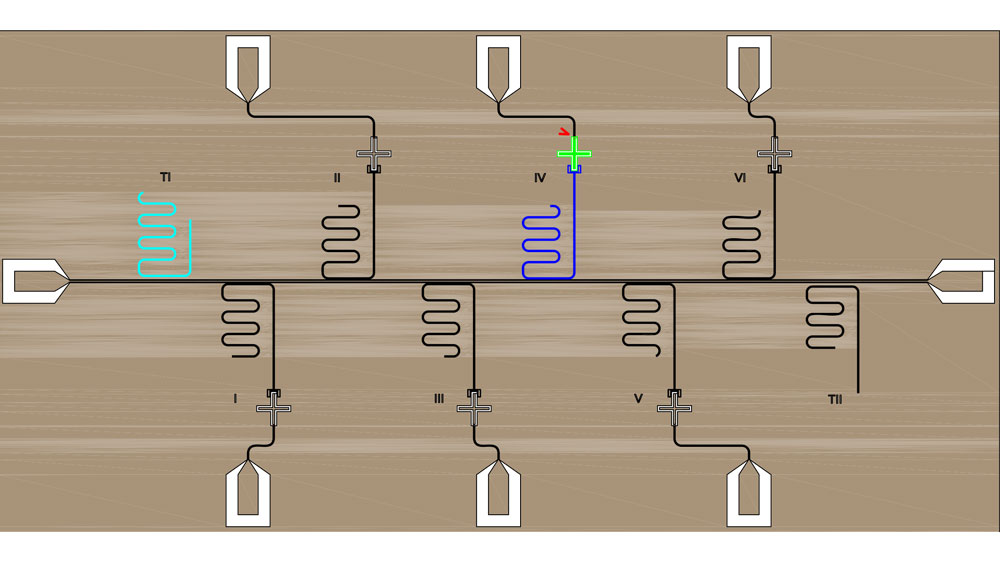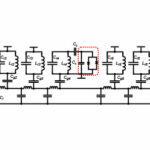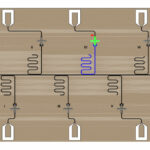- Home
- Research
- Quantum Systems
- Research results
- Cross Coupling in a Multiplexed Qubit Readout scheme
Cross Coupling in a Multiplexed Qubit Readout scheme

19.04.2021
The integration, scale-up, and multiplexing of superconducting quantum bit (qubits) arrays in quantum circuits represent one main challenge of superconducting quantum technology. To reduce the number of readout lines, a frequency multiplexing control system for a multi-qubit circuit has been proposed. In such an approach, the signals, which address different readout resonators, are sent to a common transmission line, which is coupled to resonators incorporating the qubits, see Fig. 1. Each of the resonators has a different fundamental frequency and their bandwidths are thought to be smaller than the frequency differences between them.
For microwave multiplexing designs, it is usually supposed that a qubit interacts with its own resonator only. However, in practice, a number of interactions are observed due to cross coupling effects. Such crosstalk can change the qubit states and its eigenfrequencies, the qubit transition frequency between the ground and excited states, leading to a shift of resonance frequencies of on-chip qubit-resonator systems. Inherently, according to these changes, the crosstalk effect can be experimentally characterized
In our practical implementation of a multiplexing readout of superconducting qubits, the circuit consists of a single coplanar transmission line which is capacitively coupled to a number of coplanar quarter-wavelength resonators with different fundamental frequency. Each resonator, in turn, is coupled with one planar XMON-type qubit (see Fig. 1).
It was experimentally found that the qubit energy spectrum is modified in the presence of an additional signal applied to the common transmission line. We demonstrate that this effect originates from the electromagnetic field propagating through the common ground plane, which changes the qubit’s characteristics. The microwave fields suppress the critical current of the Josephson junctions, leading to the qubit-eigenfrequency variation. Our finding may be useful for providing a proper integration of scalable superconducting integrated circuits for quantum information processing and computing.
Reference:
Dmitri Pitsun, Aydar Sultanov, Ilya Novikov, Evgeniya Mutsenik, Boris Ivanov, Aleksey Matanin, Viktor Polozov, Elizaveta Malevannaya, Anton Ivanov, Gleb Fedorov, Kaveh Delfanazari, Ilya Rodionov, and Evgeni Il’ichev (2020): Cross Coupling of a Solid-State Qubit to an Input Signal due to Multiplexed Dispersive Readout,Physical Review Applied 14, 054059, doi: 10.1103/PhysRevApplied.14.054059


